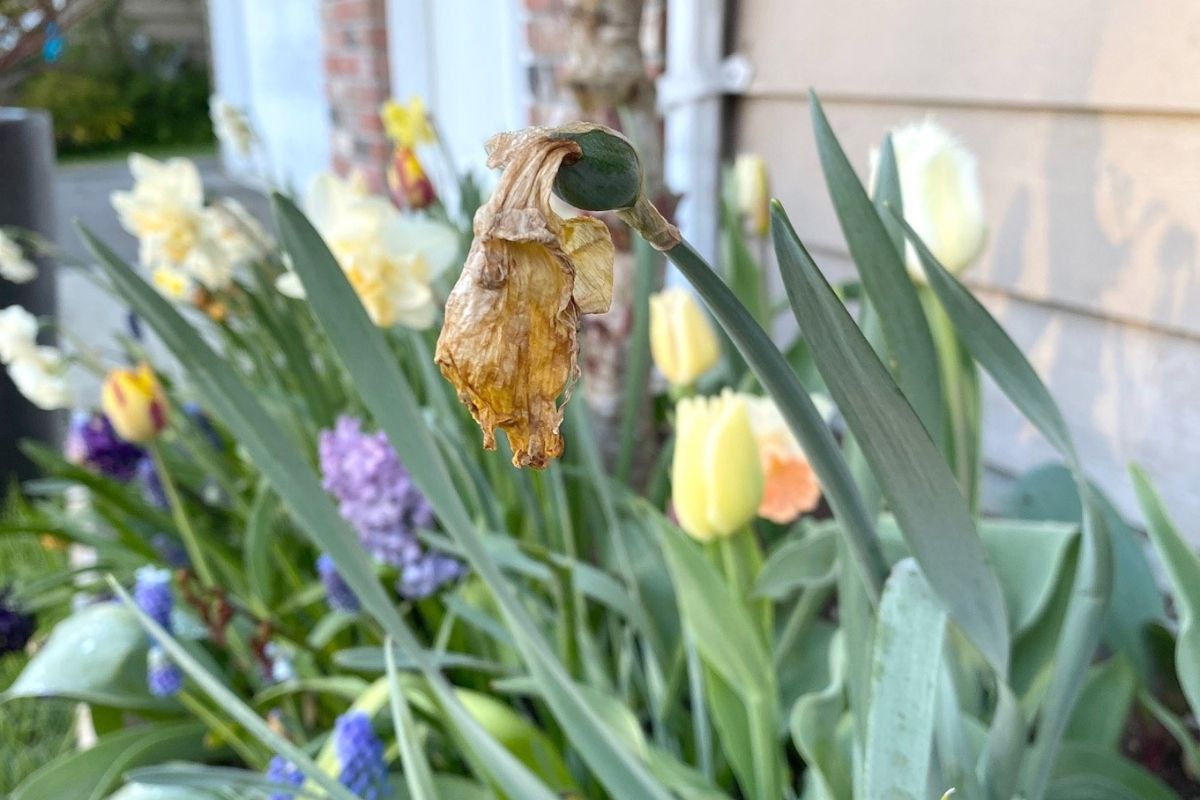
Flowering Spring Bulbs: Aftercare
Spring flowering bulbs awaken us to a new season of gardening, but as the tulips and narcissus begin to fade – gardeners wonder what to do with the bulbs.
Leave them in the ground? Dig them up?
Here’s what you need to know to give your bulbs the little TLC they need to bloom and look their best next spring.
Many people choose to treat spring flowering bulbs like annuals, digging them up and replacing them each season. Faded blooms, foliage and bulbs can all be deposited in the compost, and one can look forward to planting new selections in the fall. This approach works really well if you’re planting bulbs in containers.
Then again, many bulbs are hardy perennials and can be left in the soil to bloom again next season. Digging them up each season is not necessary, and the benefit is that many of these bulbs are also naturalizing, meaning that they multiply and spread over time. This is true for snowdrops, crocus, chionodoxa, muscari, and scilla, as well as for most narcissus and alliums. These bulbs bloom for many years of enjoyment.
Whether or not tulips return to bloom the following spring depends on the growing conditions in your garden and the species or variety of tulip planted. No two gardens bloom alike, and weather conditions can vary greatly each season. Species most likely to perennialize include Fosteriana, Greigii, Kaufmanniana, Botanical and Darwin Hybrid Tulips. Tulips, and Hyacinths too, may bloom for two to three seasons before needing replacement.
Now is the time to snip off the flowers as soon as they fade, preventing them from going to seed. Leave the foliage behind to produce energy and send it back into the bulb. All bulbs need their foliage for photosynthesis. The foliage should remain until it withers and turns yellow. This can take a few weeks or months, given the weather conditions and the type of bulb. A cool and wet spring can mean the foliage will stay green much longer; while warm and dry conditions turns foliage yellow much sooner. When the foliage has turned yellow, it is ready to go. Give it a gentle tug and it should easily pull away from the bulb.
The foliage of the earliest spring flowering bulbs, such as snowdrops, crocus, and scilla is often gone well before the first lawn-mowing. Larger bulbs such as tulips and narcissus require more time. It’s hard to resist cleaning up the garden when it looks messy, but you’re recharging the bulbs for next spring’s blooms. If the shabbiness truly becomes a problem, try planting bulbs among perennials such as hostas, daylilies, peonies, perennial geraniums and sedum to hide the spent bulb foliage.


